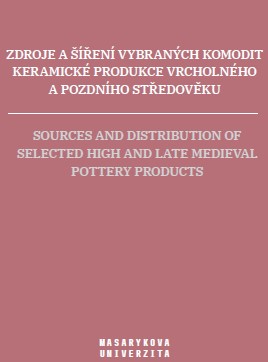Rytířská kamna
Knight‘s stove
Author(s): Markéta Tymonová, Martin Hložek, Irena Loskotová
Subject(s): Archaeology, Cultural history, Architecture, Visual Arts, History of Art
Published by: Masarykova univerzita nakladatelství
Keywords: Knight's stove; archeological excavations; stove tiles; gothic architecture;
Summary/Abstract: The name “knight’s stove” was introduced into professional literature by the Hungarian researcher I. Holl. He used the term to designate a set of stove tiles from archaeological excavations in the area of the royal palace in Budapest. Following the relief decoration and technological design, these tiles belonged to one and the same type of a heating device. The chosen name was inspired by the figure of a cantering knight in the middle of relief decoration in one of the tile groups. Holl dated the origins of this stove on the basis of a detailed analysis of heraldic elements in the whole collection to a short interval between 1454 and 1456, i.e. to the period of reign of Ladislaus the Posthumous. He first defined twelve types in the find collection (Holl 1958, 291–294). The subsequent processing of finds then identified another types (13–23) and variants of the original group (Holl 1971, 199–200). The finds treated in this chapter also are classified on the basis of Holl’s typology.
Book: Zdroje a šíření vybraných komodit keramické produkce vrcholného a pozdního středověku
- Page Range: 206-276
- Page Count: 71
- Publication Year: 2021
- Language: English, Czech
- Content File-PDF

